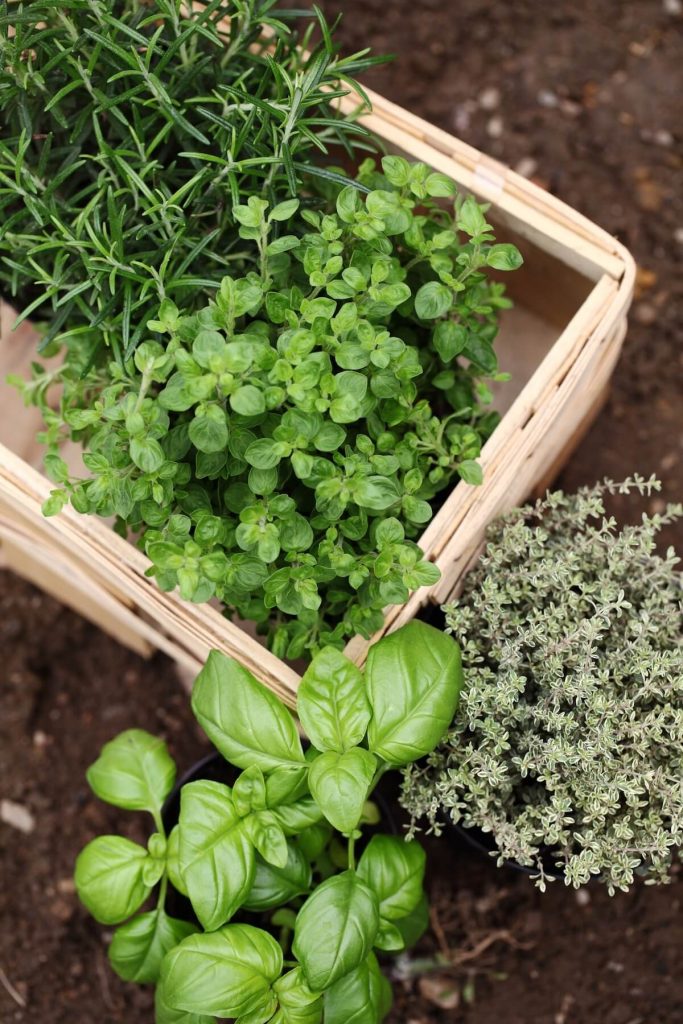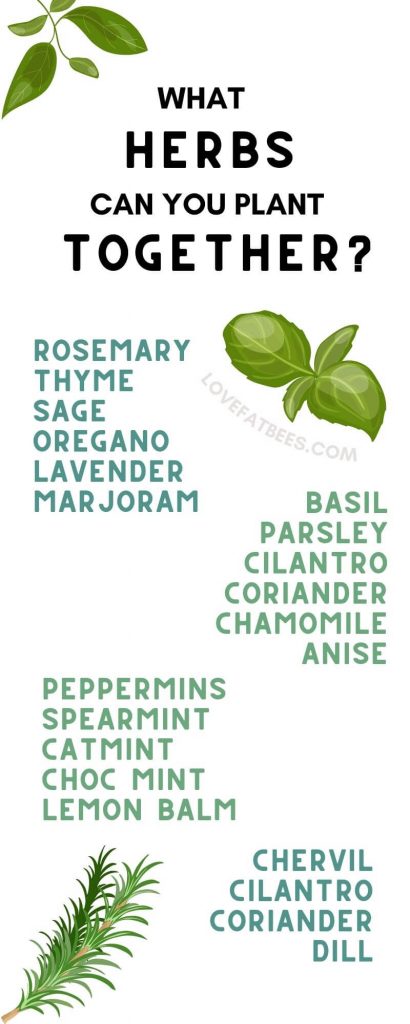What Herbs Can You Plant Together?
Herbs have always been a mainstay in the kitchen, but they’re also a staple in the home and garden. Not only do herbs add flavor to your favorite dishes and fragrance to indoor spaces, but they can also be grown as an attractive ground cover, a food source for pollinators, and even as a small living fence that will help keep pests out of your yard or garden areas.
But with all these many uses planting them can become intimidating. Which herbs can you grow together? Which ones share spaces well and which will do better on their own?

The list of herbs that can be planted together is longer than you might think, because the rule of thumb is quite simple: you can plant herbs together that have the same soil, sunlight and moisture requirements. If they like the same conditions, they’ll like the same location and be able live together in harmony.
Also, many herbs are quite forgiving and will often tolerate growing in less than their ideal conditions and still look and taste good (albeit be a little smaller or more spindly than at their absolute best). So feel free to experiment! This post covers herbs that are most ideally suited to grow together, but don’t stress if you have a few specific favorites you want to grow and they aren’t listed here as good companions. They might do just fine.
How do I know which soil, sunlight and moisture requirements my herbs have?
So how do you know which soil, sunlight and moisture requirements your herbs have? There are a few different ways to tell:
Seed packets/nursery tags One of the easiest ways to educate yourself when you’re just getting started is to read labels! Herbs started as plants in nurseries will have tags that describe what conditions they need to thrive, including sun and watering needs.
Origins (where is the herb from, originally?) If you’re interested in studying herbs more deeply diving into their origins is another option. Herbs and plants grow all over the world now, but where did they grow first? What were the conditions there? For example many herbs that are native to the Mediterranean (lavender, rosemary, oregano) like it hot, sunny and dry while herbs originally from the more tropical India (basil, parsley) are more suited to hot, sunny and moist conditions.
Use a cheatsheet! No energy for a deep dive into horticultural history and just want to get the herby goodness growing already? Print the free cheatsheet on this page and get in the know, instantly.
Plant family (it’s in the genes) Herbs that are related to each other genetically, like different varieties of mint, or parsley and cilantro, usually share similar growing requirements and will do well when grown together.
“Many herbs are quite forgiving and will often tolerate growing in less than their ideal conditions and still look and taste good.”
lovefatbees.com

Herbs that like it dry and sunny
Lavender, rosemary, oregano, sage, marjoram and thyme all grow well together because they like it warm, sunny and on the drier side. They will also tolerate more neglect than other types of herbs, thriving in a hot corner somewhere out of the way.
Herbs that like it wet and sunny
Basil, parsley, cilantro like it a little more moist and tropical-feeling. Soaker hoses and drip irrigation may be necessary in drier areas, or plant them where you’ll easily be able to monitor them and water regularly.
Herbs that like it shady
There aren’t many but some herbs do love shade but Chervil is one and some others, like mint, dill and parsley will tolerate partial shade just fine. All good choices if you have a less-than-full-sun situation.
Mints
These guys get a category all to themselves because mint is unique in how much it loves to spread! Mint can spread so much it chokes out other herbs (and plants, flowers, etc). Because of this it’s best to put mint in a pot by itself, with other types of mint, or out in a part of the yard or garden where it has room to roam.
It is beautiful, and smells wonderful when you step near it brush against it, so a “mint bed” of different flavors (chocolate mint is amazing!) is a wonderful thing.
Herb compatibility chart
| Herb | Grows well with | Do not plant with |
|---|---|---|
| Basil | Parsley, cilantro/coriander, chamomile, anise, lemon balm, dill | Sage |
| Oregano | Rosemary, thyme, sage, lavender, marjoram | |
| Rosemary | Thyme, oregano, sage, lavender, marjoram | |
| Parsley | Basil, cilantro/coriander, chamomile, lemon balm, anise | Mint |
| Cilantro/Coriander | Chamomile, parsley, basil, anise | Dill |
| Thyme | Oregano, sage, lavender, marjoram | |
| Chervil | Cilantro/coriander, dill | |
| Marjoram | Thyme, oregano, sage, lavender | |
| Lavender | Sage, rosemary, thyme, marjoram | Dill |
| Sage | Rosemary, thyme, lavender, marjoram | Basil |
| Anise | Cilantro/coriander, chamomile, parsley, basil | |
| Dill | Chervil, basil | Cilantro/coriander, lavender |
| Mint | Lemon balm, other types of mint | Anything that may be overtaken by spread/invasive roots |
| Lemon balm | Mint, basil, parsley, oregano | |
What herbs should NOT be planted together?
- Basil and sage should not be planted together
- Dill will negatively impact lavender and cilantro if planted together, causing poor growth and/or attracting pests.
- Parsley is especially susceptible to the invasive spreading roots of mint and so they should not be grown together.
There’s a lot more than you might expect surrounding which herbs and can’t be planted together, but don’t let that overwhelm you. Herbs are lovely, therapeutic little plants (in more ways than one!) and they can be forgiving even if you don’t follow the “rules” exactly. Do your best in planting them with good companions, and enjoy the process!


